- News
- Products
No content found
- Online Store
- Professional Services
- Health
- Our Stores
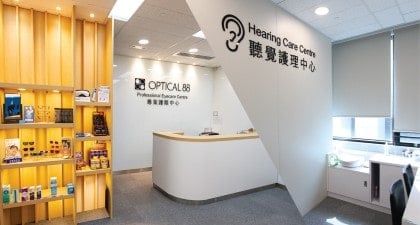
- About Us
- Member
No content found

Eyes are our windows to the world and vision is more important than any of our other senses.
A comprehensive eye examination is especially important for children. As 80% of information is collected from visual system, a clear vison ensures faster and more effective learning. A regular children eye check can identify visual and ocular health problem before they get worse, which could prevent the need for an intense lens prescription further down the line.
Eye Examination is conducted by professional registered optometrist (Part l) and belongs to annual regular eye check. It is suitable for people aged 4 or above.
Comprehensive Eye Examination includes:
(approx. 45 min)
*Important Reminder: Pupil dilation maybe needed during eye examination. We suggest putting on sunglasses, avoiding driving, using computer or reading after eye examination. In general, ocular function will resume normal after 4-6 hours.
*For children, an eye examination at our HK clinic is recommended every 6 months
*Comprehensive eye examination report can be provided upon request (with additional charge)
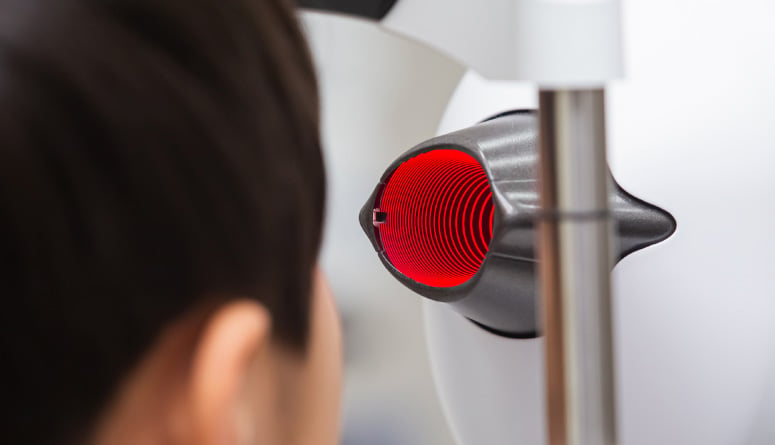
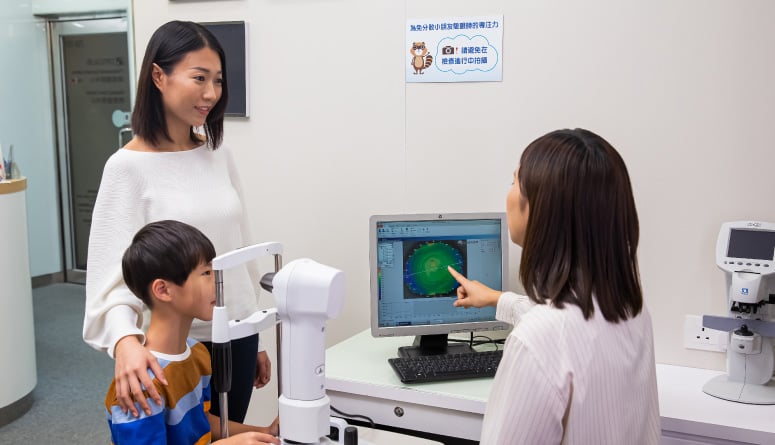
Clinical studies found that the peak period of shortsightedness (myopia) progression for Chinese children is between the ages of 6-10. As children at these ages rely on their eyesight heavily in their studies, parents should pay extra attention to their visual health.
In Optical88 Professional Eyecare Centre, our optometrists provide wide-ranging visual checkups catering to the condition and needs of your children. The 75-minutes (approximately) Myopia Control Consultation includes professional assessments below:
*Important Reminder: Pupil dilation maybe needed during eye examination. We suggest putting on sunglasses, avoiding driving, using computer or reading after eye examination. In general, ocular function will resume normal after 4-6 hours.

Children’s eyes are under rapid development at the age of 10 or below, typically increasing by around 0.1-0.2mm per year. After the age of 10, the annual increase is approximately 0.1mm1. The axial length stabilizes after the age of 16, and in adults without hyperopia or myopia, the axial length is approximately 23mm (female) / 23.5mm (male)2.
Excessive axial elongation increases the risk of myopia and may lead to rapid progression. Optical biometer can accurately measure axial length, allow optometrists to understand a child’s risk of getting myopia and decide a suitable myopia management solution.
Researches showed that children with an axial length of approximately 23.7mm (female) / 24.1mm (male) face an increased risk of developing myopia3. Every 1mm increase in axial length may result in myopia progression of 2 to 3 diopters4,5,6. An axial length exceeding 26mm raises the risk of getting eye diseases and leads to vision impairment7.
Regular measurement of axial length has become a key element for monitoring myopia progression. It is recommended that children undergo axial length measurements every 6 months, combined with changes in myopia and other relevant data, to assess the effectiveness of myopia management solution.

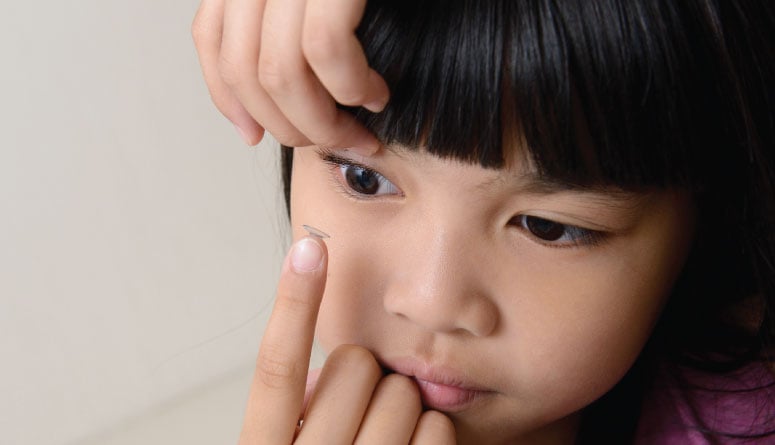
Wearing Ortho-K lenses overnight can reshape the cornea to temporarily reduce myopia and astigmatism and improve visual acuity. The reshaping effect of the cornea allows light entering the eyes to form “peripheral defocus”, delivering an effective way to slow myopic progression.
Ortho-K is a long-term visual treatment. The cornea reshaping effect is only temporal. If the wearer stops wearing the Ortho-K lenses, the cornea will return to its original shape. Therefore wearers should use Ortho-K lenses persistently and conduct regular checkups to maintain the desired effect of the treatment.
Clinical studies showed that wearing these lenses, together with good visual habits, are effective in slowing myopia progression.
The effectiveness of Ortho-K treatment varies among individual. Some people may need to wear glasses during the day in order to achieve their best visual acuity.
Ortho-K may have adverse effects. However, if you maintain regular checkups and strictly follow instructions given by professional optometrists, you can minimise the risk. You can stop the treatment any time you want and the cornea will return to its original shape within a few weeks and the refractive error will come back as well.
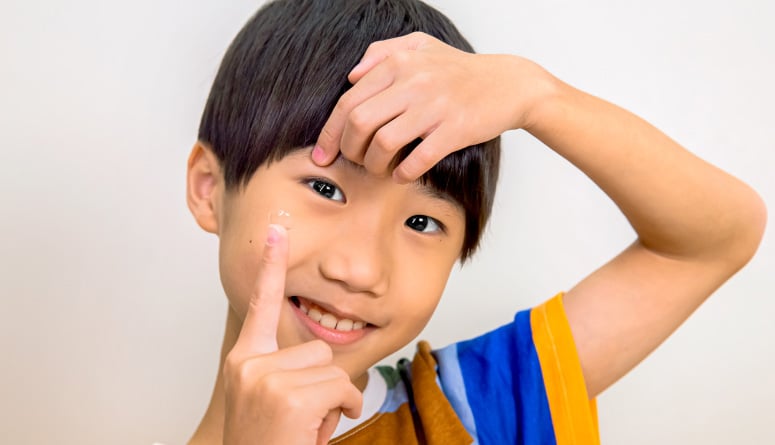

Myopia control contact lens belongs to soft contact lens to wear in daytime. It provides an alternative for myopia control. Parents do not have to worry about dislocation or even damage of spectacles. Children enjoy their daily lives and sports with wider field of view without spectacles.
Concentric rings design allows part of the light to enter the eye and create myopic defocus, hence slow down myopia progression. The rest part of the light will focus on the retina to provide clear image.
Wearing contact lenses may have adverse effects. However, if you maintain regular checkups and strictly follow instructions given by professional optometrists, risk can be minimized.

Optical 88 Eyecare Centre offers services to kids to help treat a range of eye conditions. If young clients are found to have visual problems such as amblyopia (lazy eye), strabismus (squint), focusing disorder (accommodation) and abnormal eye movements during their binocular vision or visual acuity assessment, our optometrists may advise them to undergo vision therapy in order to correct or improve their visual functions and visual acuity.
Vision training In treating amblyopia, optometrists may use an eye patch on the good eye, forcing the use of the amblyopic eye to correct its vision. They may also provide children with practices of handling small objects, such as stringing beads on a fish wire or thread, to stimulate development of the amblyopia eye.
Our team offers children lazy eye training in HK, which can help improve vision without drastic measures being taken. In treating amblyopia, optometrists may use a patch on the good eye, forcing the use of the amblyopic one to correct its vision. They may also provide children with practices of handling small objects, such as stringing beads on a fish wire or thread, to stimulate development of the lazy eye.
During the course of eye training, which may last a long period, optometrists will devise a variety of exercises using different equipment, tools and computer programmes based on children’s condition.
Clients under the age of seven normally have the best outcomes for vision therapy, as treatment on more developed eyes proves less effective. The therapy will be carried out at both the centre and the child’s home. To achieve optimal results, parents and their child should work closely with the trainer.
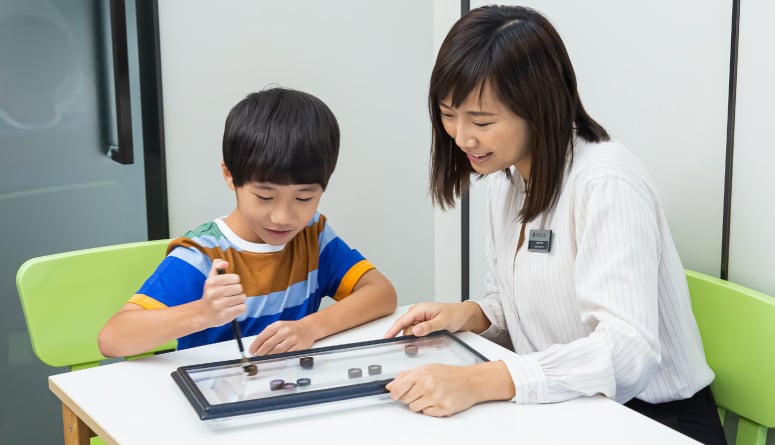
Colour vision deficiency can be classified as acquired or inherited. Inherited colour vision deficiency is primarily genetic, characterised by red-green colour blindness or defects in most cases. Acquired colour vision deficiency is often associated with pathological changes of retina or optic nerve, which may be caused by glaucoma or side effects of drugs.
Cases of total colour blindness are rare, and people with colour deficiency may not find it too inconvenient coping with everyday life. They can tell the differences by other signals, such as the positions or icons of traffic lights. However, their choices on occupation may be limited, particularly in the fields requiring colour perception like fine art, medicine, chemical engineering, electrical engineering and telecommunications.
When conducting a colour vision assessment, optometrists will use Ishihara test to screen red–green colour blindness or defects. More accurate colour test such as a Farnsworth D-15 test is needed in order to ascertain the severity of colour deficiency.
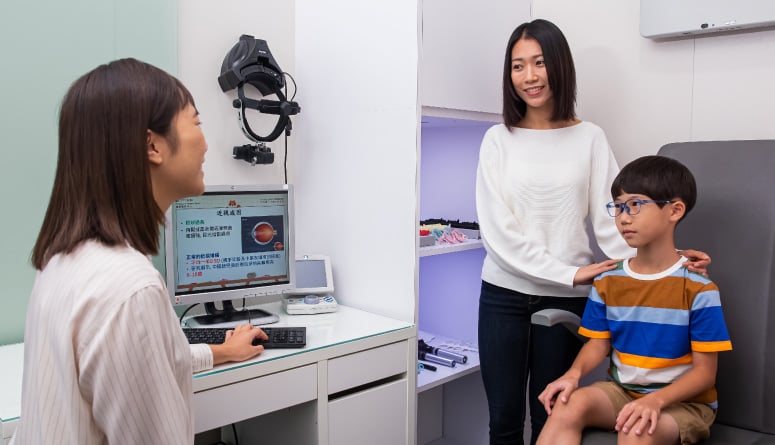
1.Our optometrists will determine the necessary eye tests and procedures for you based on your eye conditions, and will provide you with the relevant test results.
2.Our optometrists may apply mydriatic eyedrops to dilate your pupils during the eye examination. After dilation, your eyes will become more sensitive to light and your near vision may be blurred temporarily. We advise you to bring a pair of sunglasses or an umbrella to protect your eyes from light. In addition, you should avoid driving, operating any machinery and doing paperwork after pupil dilation. In general, the drugs effect will only last for 4-6 hours.
3.It is not advisable to wear contact lens immediately after eye examinations as diagnostic drops may be applied.
4.The above information is for reference only. Please feel free to contact Optical 88 Professional Eyecare Centre or visit any Optical 88 branches for more information. Please make an appointment if you wish to have a comprehensive eye examination.
References
1.Willem Tideman, Clair Enthoven, Vincent Jaddoe, Jan Roelof (JR) Polling, Caroline Klaver; Axial length growth from 6 to 13 years of age and risk of myopia at age 13: the Generation R study. Invest. Ophthalmol. Vis. Sci. 2020; 61(7):852.
2.Fledelius HC, Christensen AS, Fledelius C. Juvenile eye growth, when completed? An evaluation based on IOL-Master axial length data, cross-sectional and longitudinal. Acta Ophthalmol. 2014.
3.Rozema J, Dankert S, Iribarren R, Lanca C, Saw S-M. Axial Growth and Lens Power Loss at Myopia Onset in Singaporean Children. Invest Ophthalmol Vis Sci. 2019; 60(8):3091-3099.
4.Alex Nixon, Wright Shamp, Elizabeth Maynes, Xu Cheng, Mark A Bullimore, Noel A Brennan; Ratio of Refractive Error Change to Axial Elongation in Young Myopes. Invest. Ophthalmol. Vis. Sci. 2022; 63(7):255 – A0109.
5.Meng W, Butterworth J, Malecaze F CP. Axial length of myopia: a review of current research. Ophthalmologica. 2011; 225(3):127-134.
6.Michaels DD Visual Optics and Refraction: A Clinical Approach. 3rd ed. St Louis, Mo CV Mosby Co1985
7.Tideman JWL, Snabel MCC, Tedja MS, et al. Association of Axial Length with Risk of Uncorrectable Visual Impairment for Europeans With Myopia. JAMA Ophthalmol. 2016; 134(12):1355–1363. doi:10.1001/jamaophthalmol.2016.4009
8.Cho P, Cheung SW, Edwards M. The longitudinal orthokeratology research in children (LORIC) in Hong Kong: a pilot study on refractive changes and myopic control. Curr Eye Res 2005 Jan;30(1):71-80.
9. Kakita T, Hiraoka T, Oshika T. Influence of overnight orthokeratology on axial elongation in childhood myopia. Invest Ophthalmol Vis Sci 2011 Apr; 52(5):2170-4.
10.Chamberlain P, Peixoto-de-Matos SC, Logan NS, Ngo C, Jones D, Young G. A 3-year Randomized Clinical Trial of MiSight Lenses for Myopia Control. Optom Vis Sci. 2019 Aug;96(8):556-567.
11.Lam, C.S.Y., et al., Defocus Incorporated Multiple Segments (DIMS) spectacle lenses slow myopia progression: a 2-year randomised clinical trial. Br J Ophthalmol, 2019.

